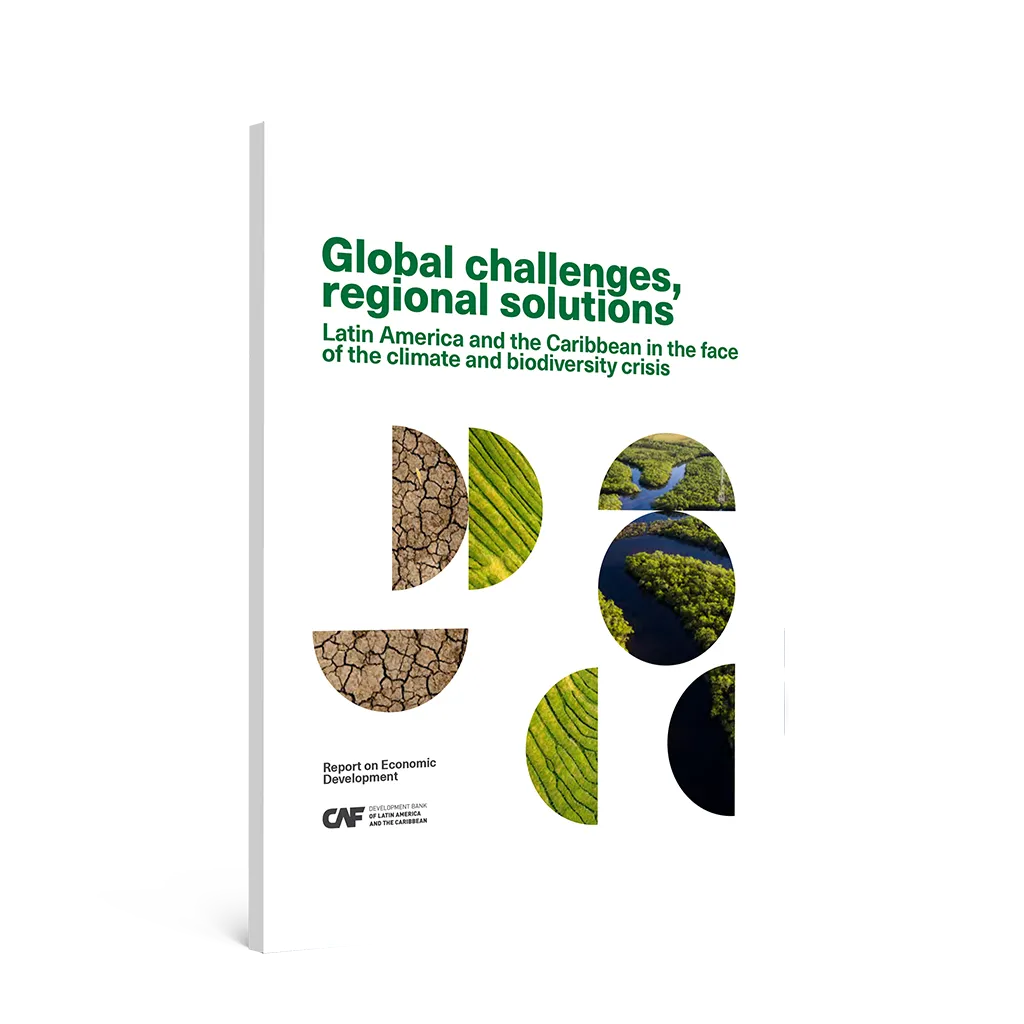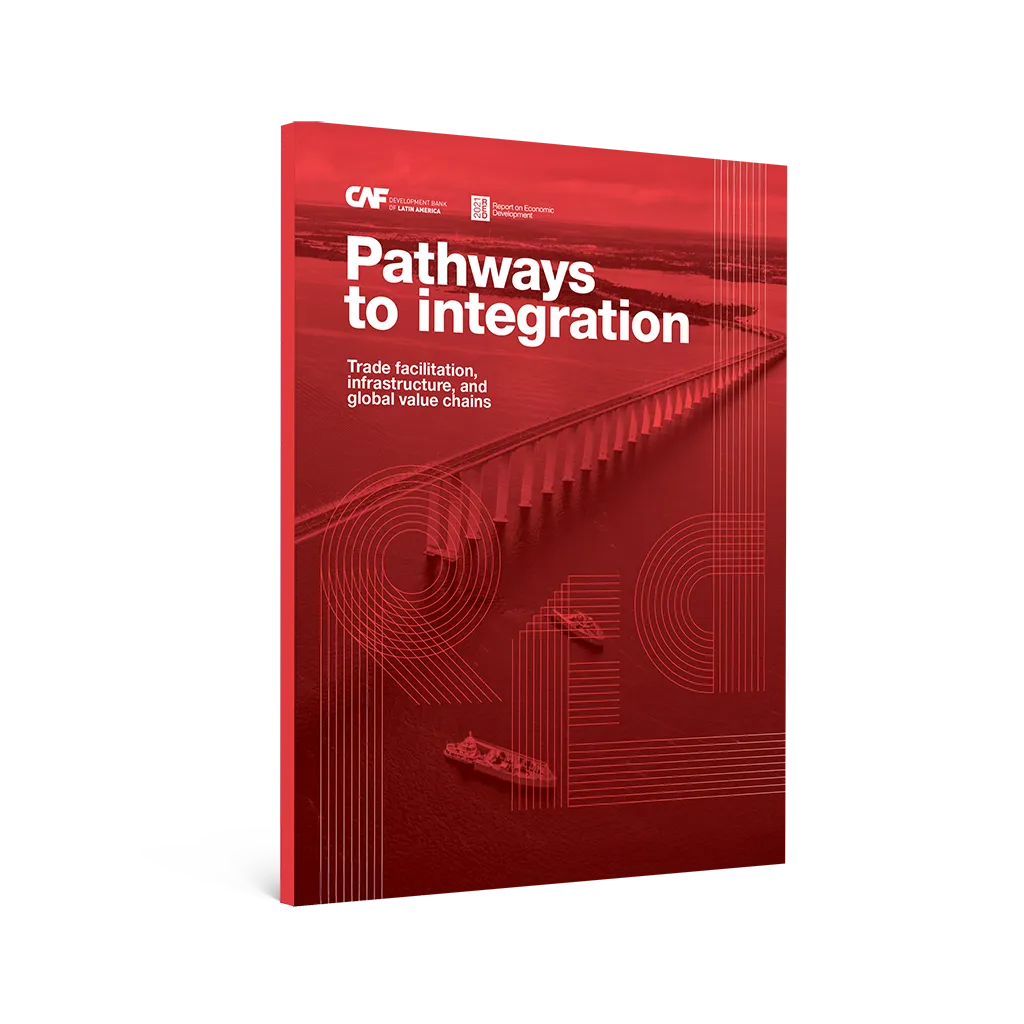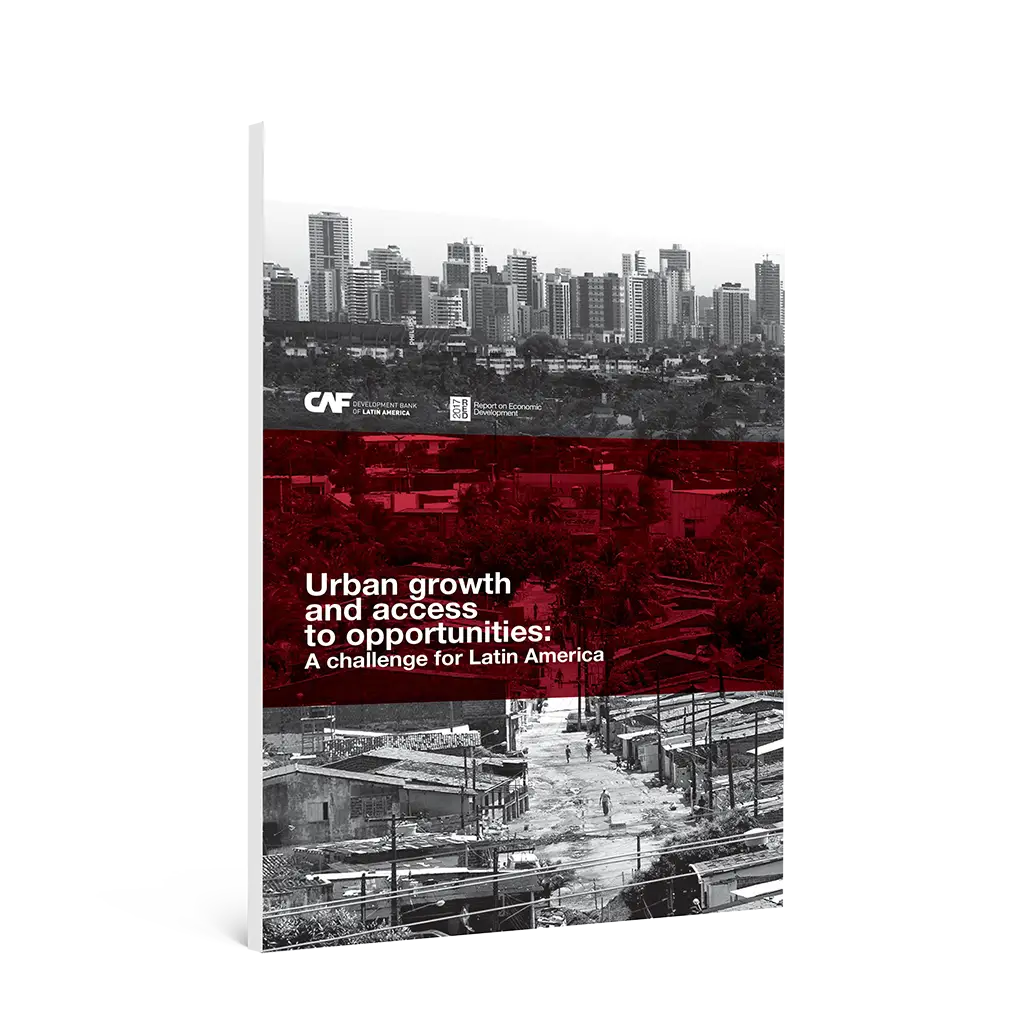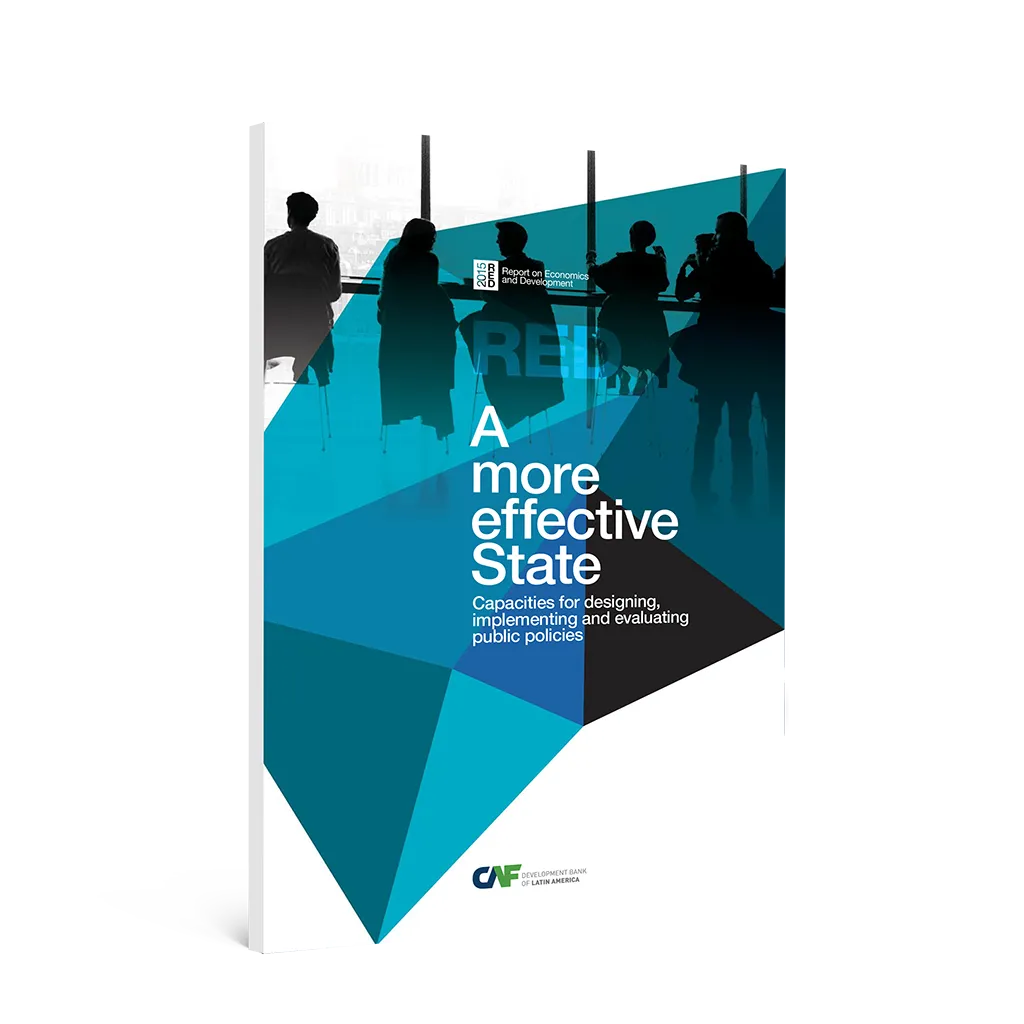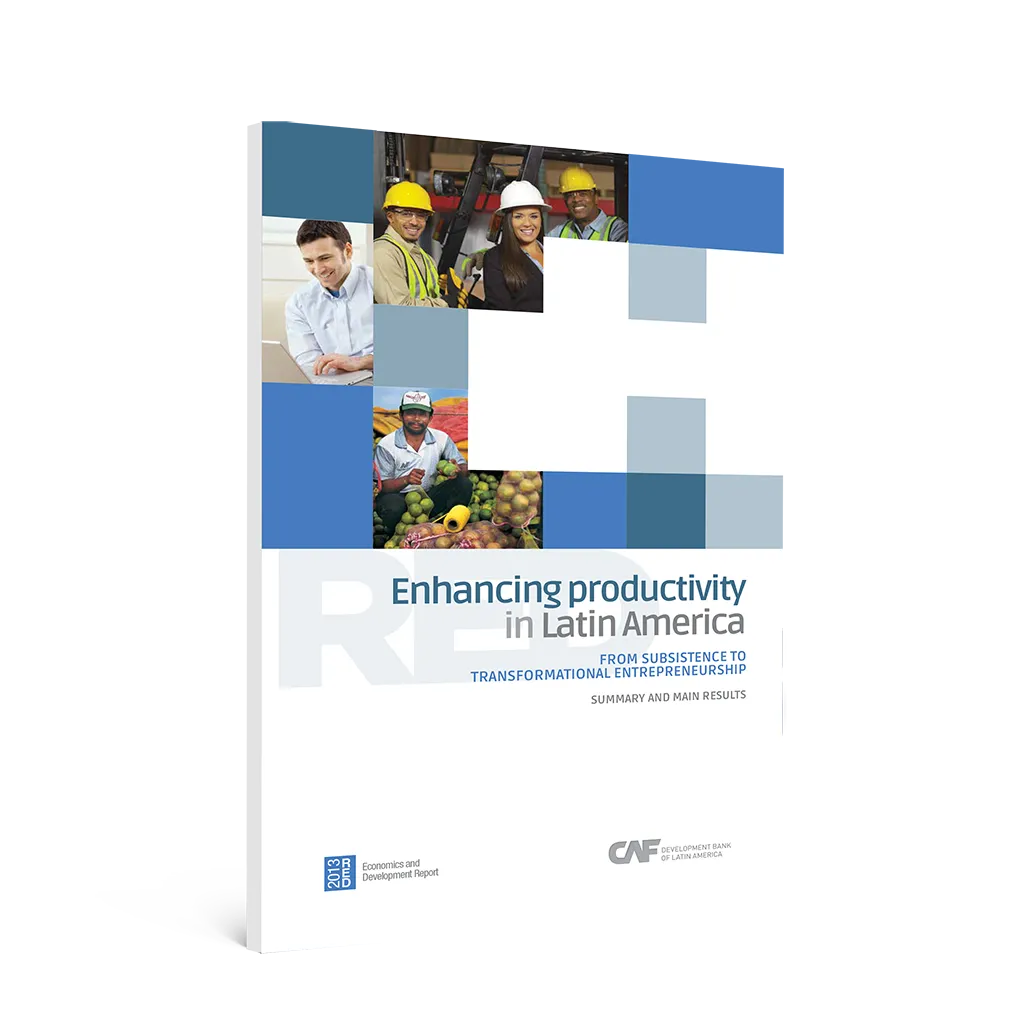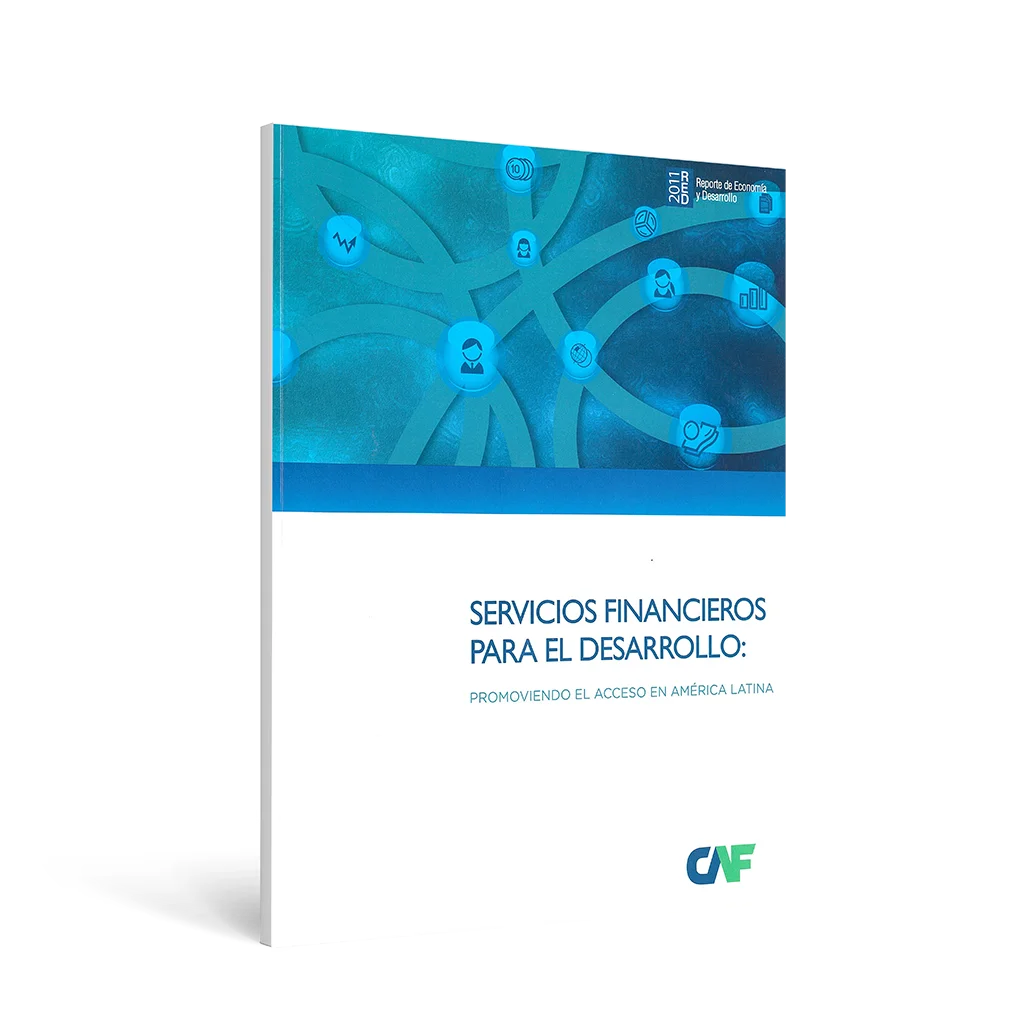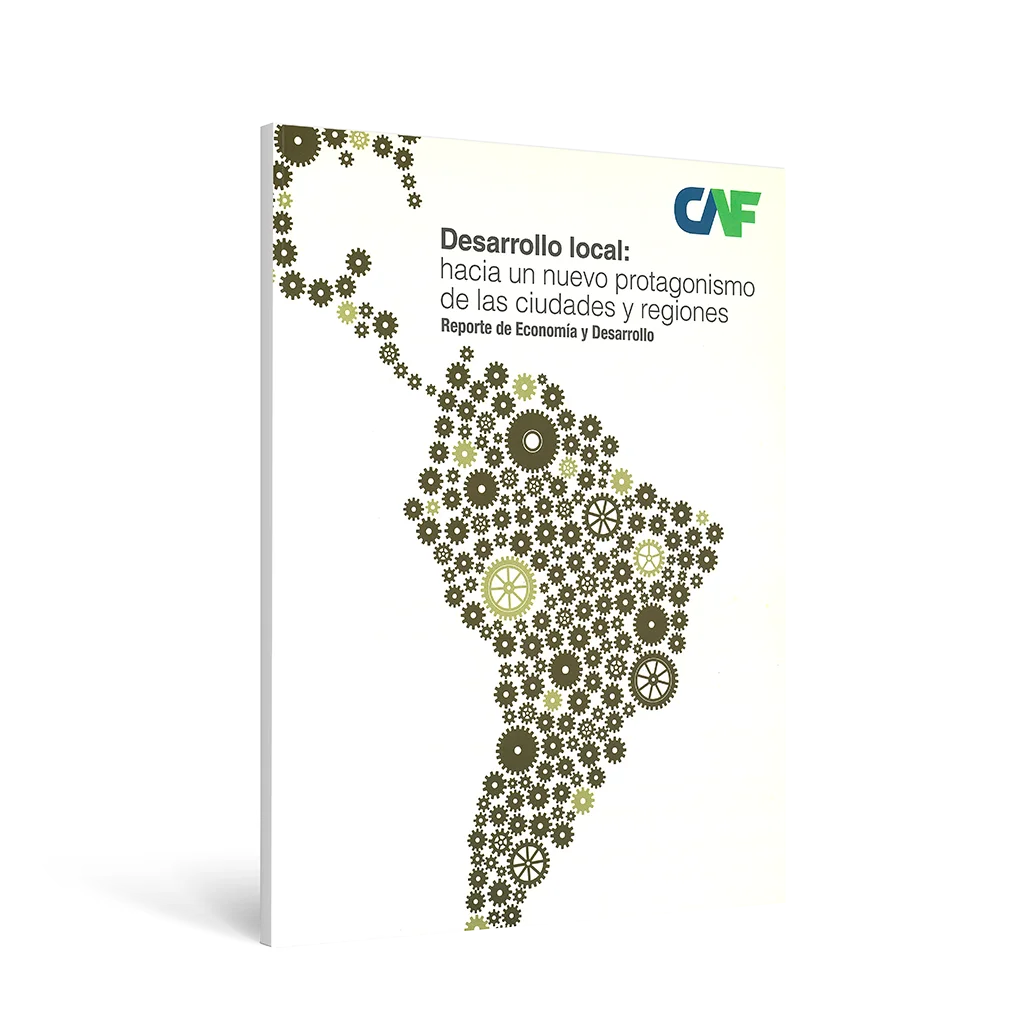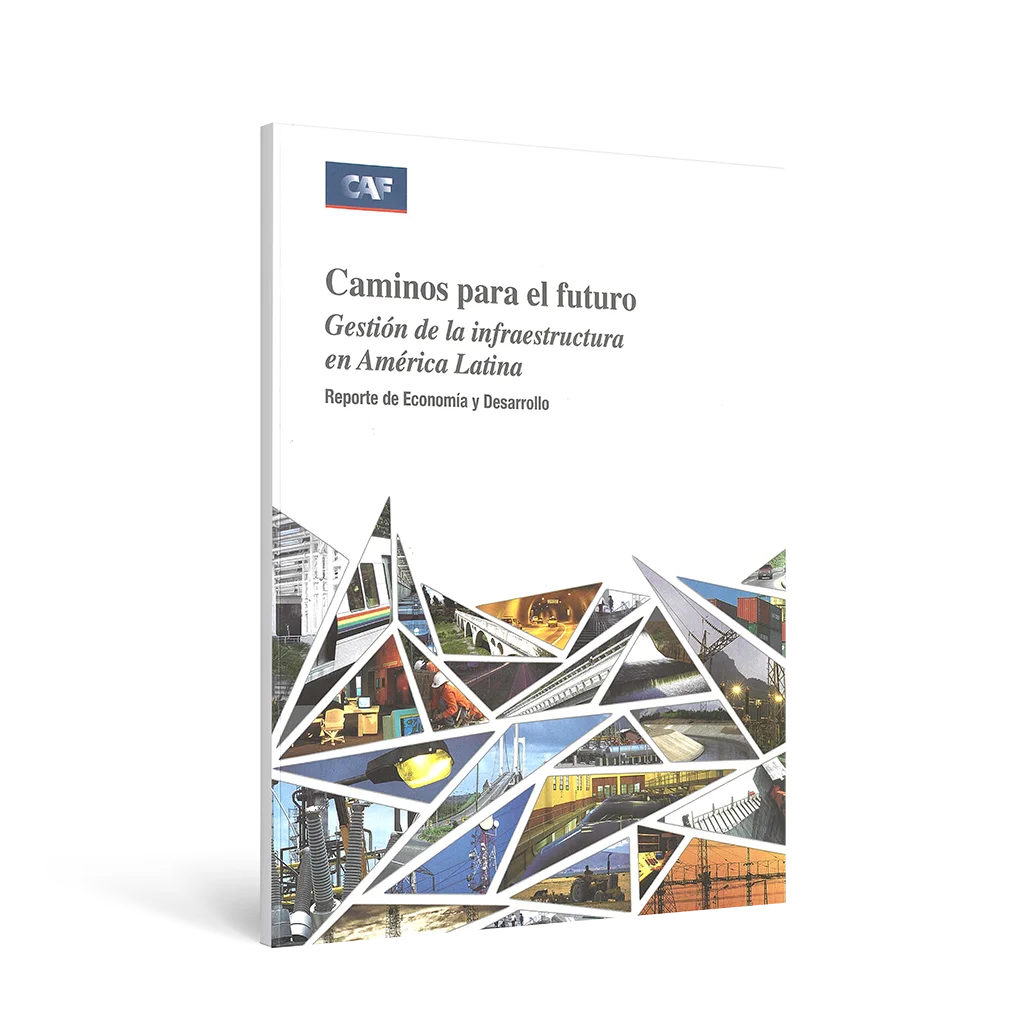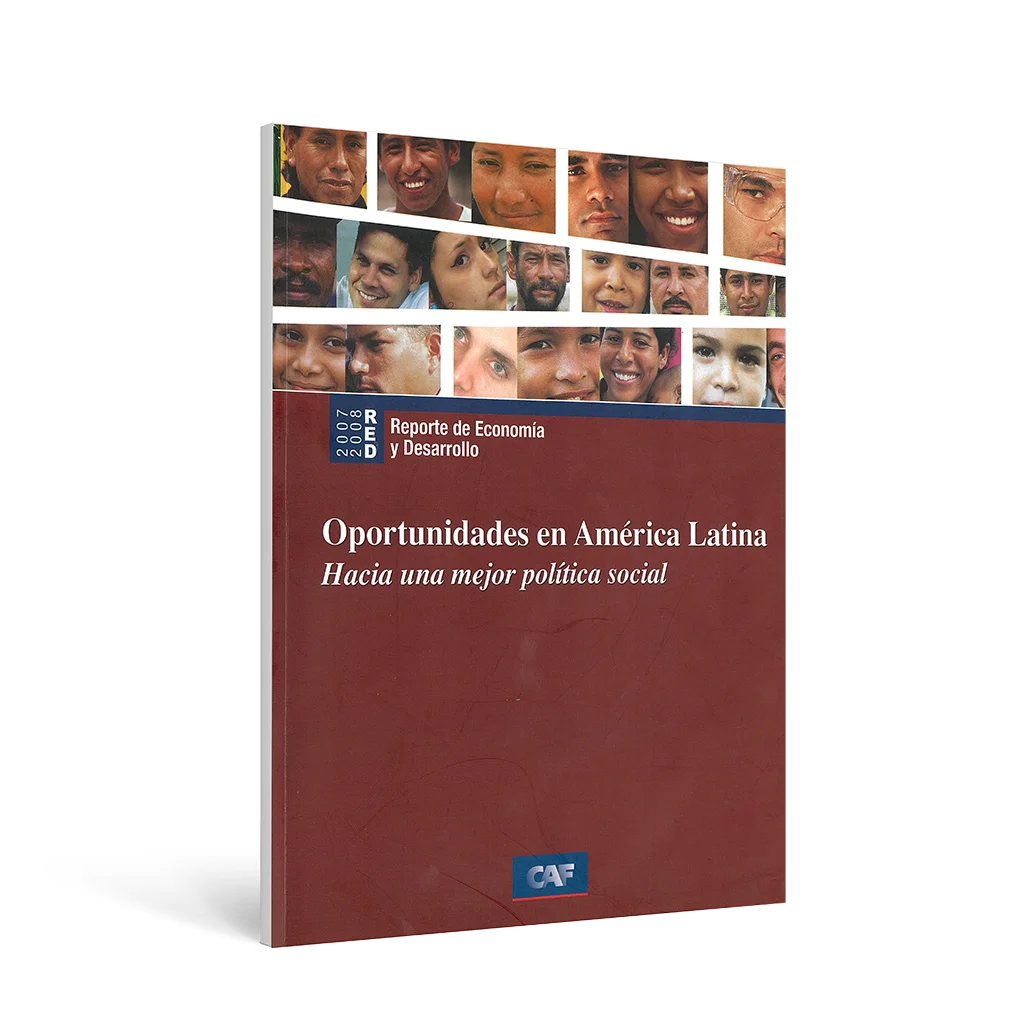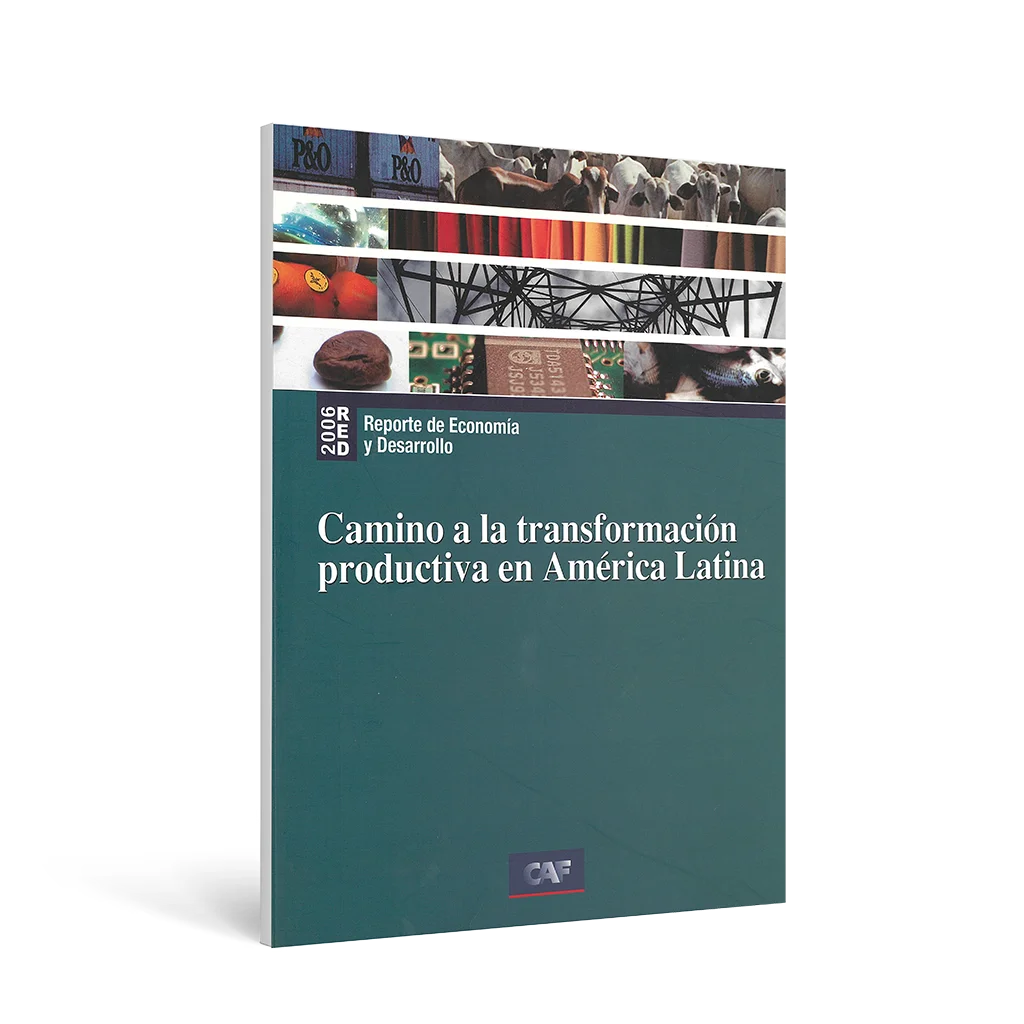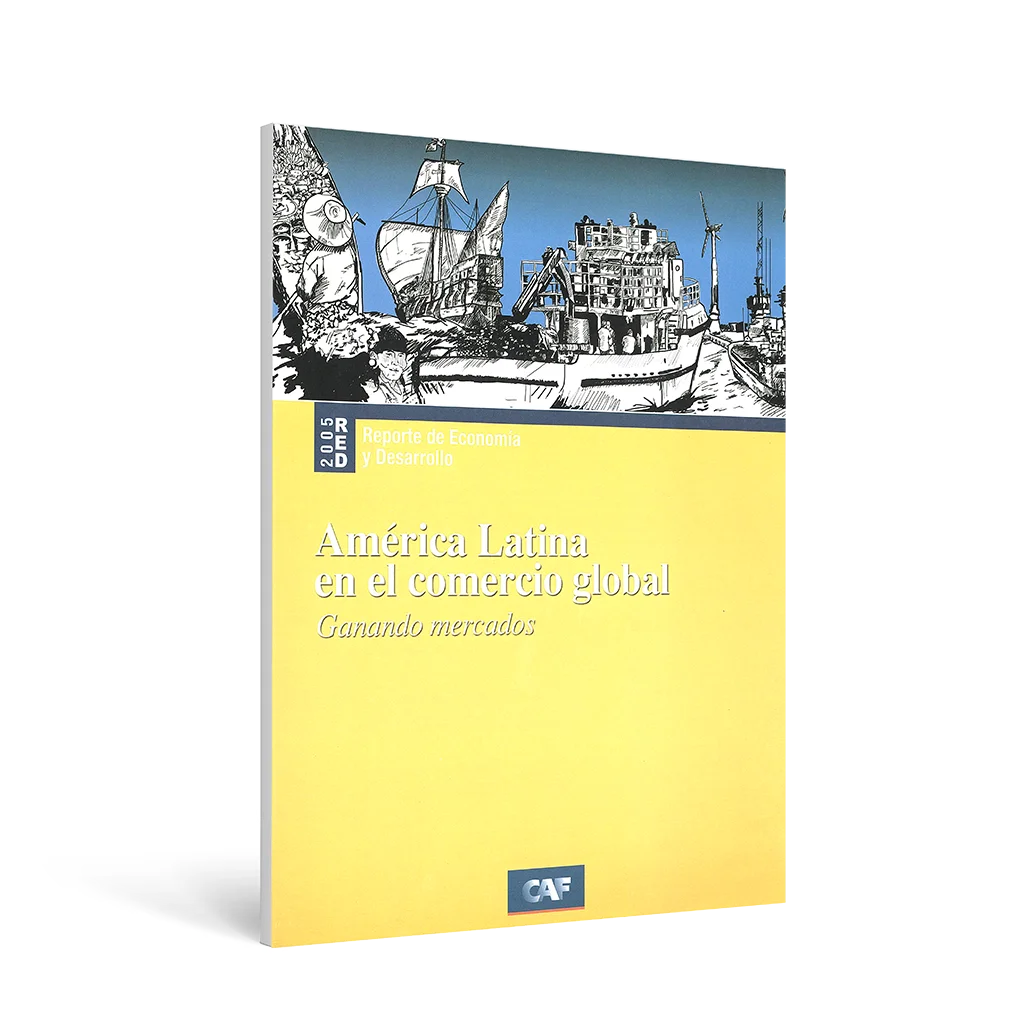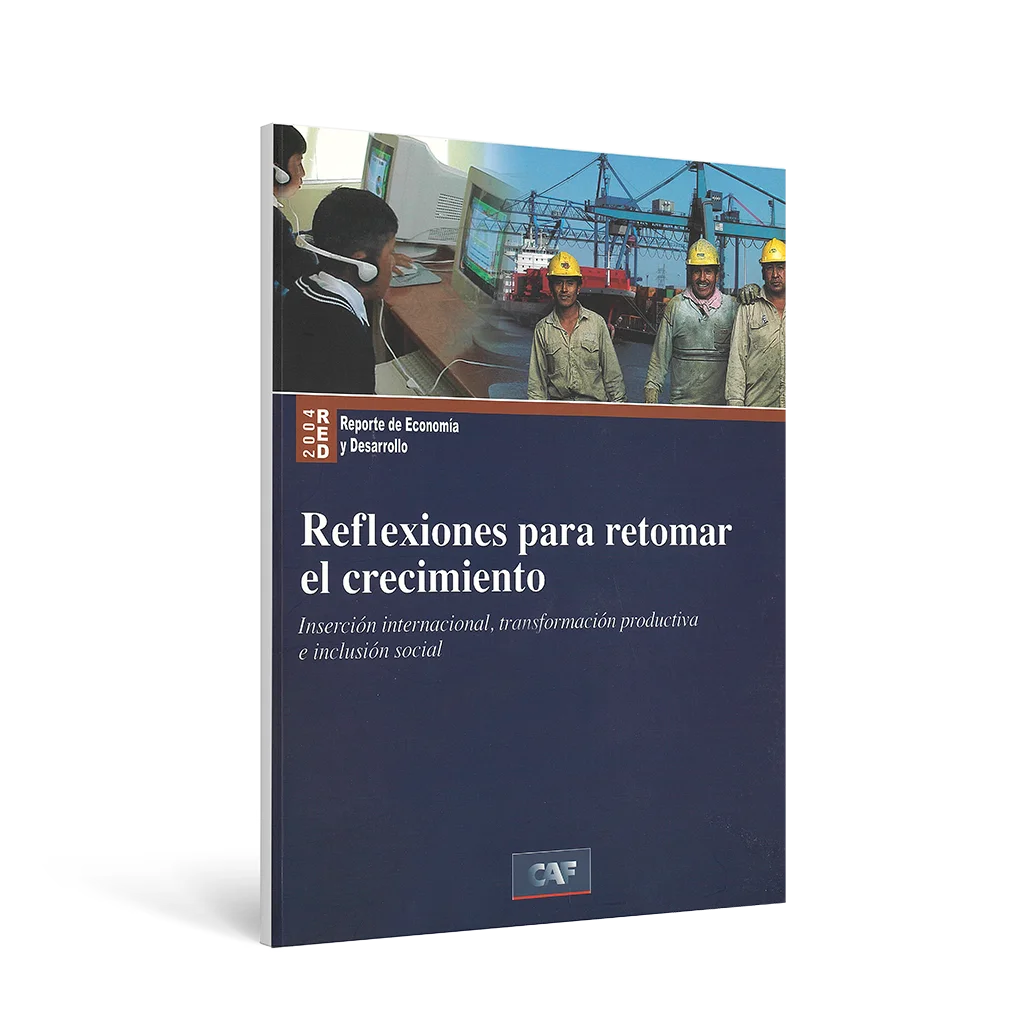Twenty years thinking about development from Latin America and the Caribbean
The Report on Economic Development
The first Report on Economic Development (RED) was published in 2004 in response to the growing need to add knowledge to CAF’s operations and support decision-making on development policies. From its inception, the RED sought to complement the institution’s interventions through an in-depth analysis of the challenges in the region.
The context that characterized Latin America and the Caribbean at the beginning of the RED series was that of a region that, although heterogeneous, had made significant progress in terms of democratic consolidation, macroeconomic stability and market deepening. However, this progress had fallen short of expectations and promises in terms of sustained and robust economic growth, and a deep social debt persisted. In fact, the region had experienced aggregate per capita income growth rates of only 1 % in the preceding decade, and showed significant growth in poverty.
At that time, CAF had been in existence for 35 years and was undergoing a period of transformation. The institution, which in its beginnings had focused on financing economic infrastructure projects, was seeking to transform itself into a development bank with a mission that encompassed a greater diversity of sectors. In addition, it expanded its territorial presence with the incorporation of nine member countries in the previous decade and five in the last five years, bringing its membership to 17. Today, the institution has 21 members and is moving toward consolidating its presence throughout Latin America and the Caribbean.
In response to the needs of the context, RED was conceived as a knowledge platform for informed policy discussion on key regional development issues. From the outset, each annual report was dedicated to carrying out an exhaustive empirical diagnosis, analyzing the rigorous evidence available and contributing original research, in order to offer clear and feasible policy recommendations. Always with a view from and for the region. This approach has helped RED become a reference for those who design and implement policies in the region, consolidating its position as an indispensable resource for effective, evidence-based development.
From its inception, the report sought an integral vision of development, understanding economic growth as a sine qua non condition and, at the same time, a means to improve the well-being of the region’s inhabitants. The emphasis of the first three editions of the RED was on economic growth, trade integration and change in the economic structure (Reflections for resuming growth, Latin America in the global context and The road to productive transformation); in all of them, the concern for inclusion was of central importance1.
Over the years, the report systematically addressed the areas of social inclusion (opportunities in Latin America; more skills for work and life; inherited inequalities), economic growth and integration (financial services for development; entrepreneurship in Latin America; institutions for productivity; pathways to integration) and, more recently, environmental protection (global challenges, regional solutions; just energy transition for sustainable development). In addition, the series dealt in depth with the study of State capabilities, a central focus of work and one of the great debts of the region’s development. This approach was taken in a cross-cutting manner and with a territorial focus, as well as through dedicated issues (public finances for development; a more effective State; integrity in public policies; the next State).
Figure 1.3 Latest editions of RED
Over two decades, the central concerns of the RED editions have persisted: promoting sustainable development in Latin America and the Caribbean. During this time, the region has experienced a regional convergence in certain aspects: countries that previously showed human development indicators characteristic of low-income economies, such as Paraguay, Peru, Bolivia and the Dominican Republic, have moved closer to once more advantaged countries in the region, such as Argentina, Uruguay and Mexico. However, they appear to be the newest members of the group of economies in the «middle-income trap», characterized by economic stagnation, high and persistent levels of poverty and inequality, and intermediate institutional quality. The future knowledge agenda must respond to the challenges and the particular context of each country, considering a global environment marked by demographic, digital and green trends. In addition, it must address the strengthening of State capacities required to undertake the pending tasks towards sustainable development in the region.
Contents of the book
This book, developed for the 20th anniversary of the RED series, is organized into five chapters. The first chapter introduces the concept of development in its multidimensional nature and presents a stylized diagnosis of progress and pending issues in the region. It also addresses the most salient cross-cutting characteristics of the Latin American and Caribbean context (productive informality, deficient infrastructure and crime, resource endowment and macroeconomic institutionality), and the long-term transitions (technological, demographic and green) that condition the path of development in the region.
Chapters 2, 3 and 4 address the areas of economic growth, social inclusion and environmental sustainability, providing a detailed diagnosis and a proposal for specific policies for each. The diagnosis in chapter 2 points out that the region’s per capita GDP has grown insufficiently, limiting its capacity to converge towards the income levels of developed countries. It is emphasized that this low growth is linked to low productive efficiency that cuts across all economic sectors. The proposed policies are focused on improving the distribution of productive factors and promoting innovation. These include labor strategies, especially those aimed at formalizing employment and developing skills for emerging sectors. They also address competition policies and access to quality inputs, participation in global trade and the promotion of a new industrial policy that avoids the old mistakes of «picking winners» and fosters coordination and the generation of productive externalities.
Chapter 3 shows that, although significant progress has been made in reducing poverty in the last two decades, one out of every three inhabitants of the region continues to live in poverty, while it remains one of the most unequal territories in the world. The chapter presents the main policy instruments, organized around the life cycle of individuals, which prioritize attacking barriers to access to opportunities as a way of reducing poverty in a lasting way and breaking intergenerational cycles of exclusion. At the same time, it recognizes that ex post redistribution policies are a necessary complement for those who are critically deprived and unable to take advantage of employment opportunities.
Chapter 4 warns that global efforts to reduce greenhouse gas emissions are insufficient to avoid the serious consequences of climate change. Furthermore, the degradation of ecosystems and the air and water pollution experienced by the region’s inhabitants is alarming. The impacts of climate change are already evident and are particularly affecting the region, which is why the chapter emphasizes the need for adaptation policies. The chapter highlights the central importance of mitigation policies in the agriculture and forestry sector, as well as in the energy and industrial sectors, which will become increasingly important as the economy expands. It also presents instruments for protecting the environment and ecosystems. The chapter discusses the opportunities offered by technology and the stock of natural resources in the territory and pays special attention to the fiscal impact of these policies and the green transition in general.
Finally, chapter 5 offers a prospective outlook, outlining a development strategy that will enable the region to respond to the key trends identified in the first chapter and in the context of the pre-existing challenges of growth, inclusion and environmental preservation. It addresses the strengthening of institutions and State capacities needed to implement the required policies and to adapt governance structures to a context that requires complex policies and coordination at multiple levels. This last chapter also analyzes the role of multilateral development banks as allies in the development process.
The chapters highlight the valuable contributions of globally recognized experts who have shared their knowledge in the various areas that make up development. Their contributions are reflected in the form of boxes that capture the essence of their reflections in the context of the discussion.

